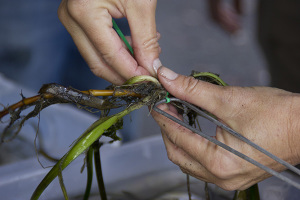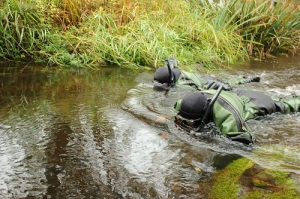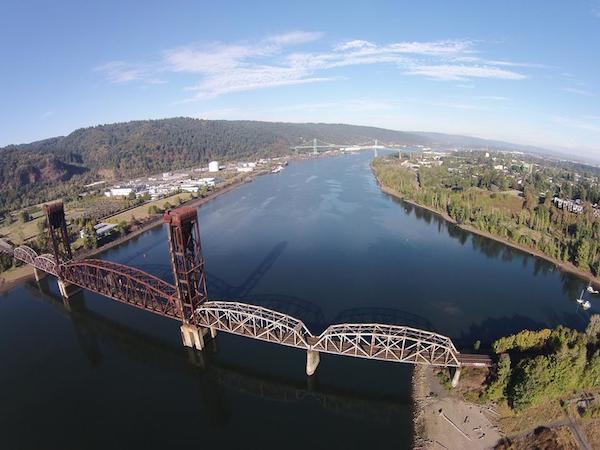On the Muckleshoot Reservation, in Washington, grieving for the late actress Misty Upham has been ongoing. The Upham family has sent out the following details of the coming days’ events:
The family of Misty Upham would like to thank everyone for their support. The funeral arrangement includes:
A wake Wednesday, Thursday, Friday and a Memorial service on Saturday, October 25, at 2:00 pm at the The Pentecostal Church at Muckleshoot 39731 Auburn Enumclaw Rd SE, Auburn, WA 98092 (Pastor Kenny Williams cell: 253-261-6003)
Misty will arrive at noon on Wednesday October 22, 2014.
For those who would like to bring flowers, food, financial support, or help in any capacity, donations are being accepted at the The Pentecostal Church at Muckleshoot
Online, expressions of grief and love have poured forth from all over Indian country. Here are just a few of them from Twitter and Facebook:
Gil Birmingham (via Facebook)
An incredibly tragic and heartbreaking farewell to a courageous spirit artist warrior. RIP Misty Anne Upham… our hearts will always be with you and your family.
Julia Jones @JuliaRJones
We lost a beautiful soul and a great talent this week. RIP Misty Upham. Wish we had more time with you.
Michelle Thrush (via Facebook)
Shocked and saddened that you left.. RIP Misty.. You fought a good fight sister. May you finally be at peace
You gave so bravely.. Until our next walk together we will all miss your smile my friend..
American Indian Film Institute (via Facebook)
To our dear friend Misty Upham, we are so grateful to have known you as a person, actress and TTP youth mentor. Your hard work and dedication will live on forever, we ARE and WILL always continue to be big fans of yours. With heartfelt condolences to your parents, family and friends. You are a treasure and a shinning star for all to see.
Roseanne Supernault (via Facebook)
My most heartfelt condolences to the Upham family, Misty’s friends and community. I admired your work Misty, I looked up to you, and I pray that you have safe travels on your journey. Please take a moment today to meditate/pray upon this beautiful and talented woman’s spirit. Please send love & light to her family & friends. Hiy hiy.
Leonard Sumner @LeonardSumner
@MistyUpham was so badass in August: Osage County… She stole the thunder in that movie. So sad to hear about her passing.
Renee Roman Nose @ReneeRomanNose
My love and prayers to Misty’s family and friends. What a sad day for Indian Country.
Bird Runningwater @BirdRunningH2O
RIP Misty. Prayers for your journey.
Michelle Hall Shining Elk (via Facebook)
Dang it! This is not how this was suppose to end. Thoughts and prayers go out to Misty’s family during this most difficult time. May her new journey be forever pained free.
Wambli Eagleman @InfamousWambli
My heart is Broken….Rest Well @MistyUpham …my thoughts and prayers go out to the family…
Sonny Skyhawk (via Facebook)
What a loss tour people and her family, she was such a talented young lady. When I read ” No signs of foul play ” and heard the families pleas to the Auburn Police for help to find her, the word FOUL PLAY applies and belongs to them, due to their failure to asses the situation as bi-polar breakdown and assist accordingly, but that was not the case. Being INDIAN on a reservation can sometimes work against you with local police. My friends Aunt and Uncle burned to death because the fire was across the road from the fire station on a reservation , and they were “unauthorized” to cross the road.
Tatanka Means (via Facebook)
RIP super talented Indigenous woman, Misty Upham. So sad. Such a huge loss to the acting world and Indian community. She was a star who inspired me. I was a fan of her work. She will be greatly missed and remembered for her amazing performances on the big screen. I wish I had gotten the opportunity to work with you. #mistyupham
Sandra Hinojosa @ms_sandrah
So saddened by the death and loss of two influential actresses this week. RIP @MistyUpham and #ElizabethPena you are remembered
Kat’ela @theyfearher
@MistyUpham my friend,I can’t believe you’re gone..Thank You for being my friend and keepin it REAL…I will miss you always..#MistyUpham 🙁
Digital Drum @ourbeat
A sad day in Hollywood yet again. RIP @MistyUpham A Life taken too early. Sending prayers to all family and friends
Shawn Michael Perry (via Facebook)
GOOD MORNING FRIENDS….!!!! IT IS WITH A HEAVY HEART THAT I MOURN THE LOSS OF MISTY UPHAM….!!!! HER QUIET BEAUTY WILL BE WELCOMED BY OUR LORD,OUR GOD,THE CREATOR…..!!!!
Star Idlenomore Nayea (via Facebook)
RIP Misty Upham, wish you didn’t have to leave us so soon.. I cried tonight when I heard the news, realizing what a tragic loss this is. Myself with a group of youth here in Klamath Falls, were writing a song you would have loved! Its for ALL victims of Violent Crimes..Its called “Start By Believing”. For all those afraid to come forward because they think no one will believe them..You would have loved to hear all these youth singing the words of encouragement, to those in harms way, telling them to believe in themselves! I don’t know why, but I was thinking of you all night. I am so deeply sorry you have left us..I am thinking of your family sending sincere condolences, also to the countless who are now grieving your loss. I am terribly sad we didn’t cross paths more, seems as though we would have been fast friends..From what I hear, there was NO ONE, like you. & prayers, safe journey home special one…
Mary Kim Titla (via Facebook)
I just watched August: Osage County. Misty Upham did so great. Sad to hear of her passing. RIP
Lise Balk King (via Facebook)
rest in peace misty. heart so heavy.





















